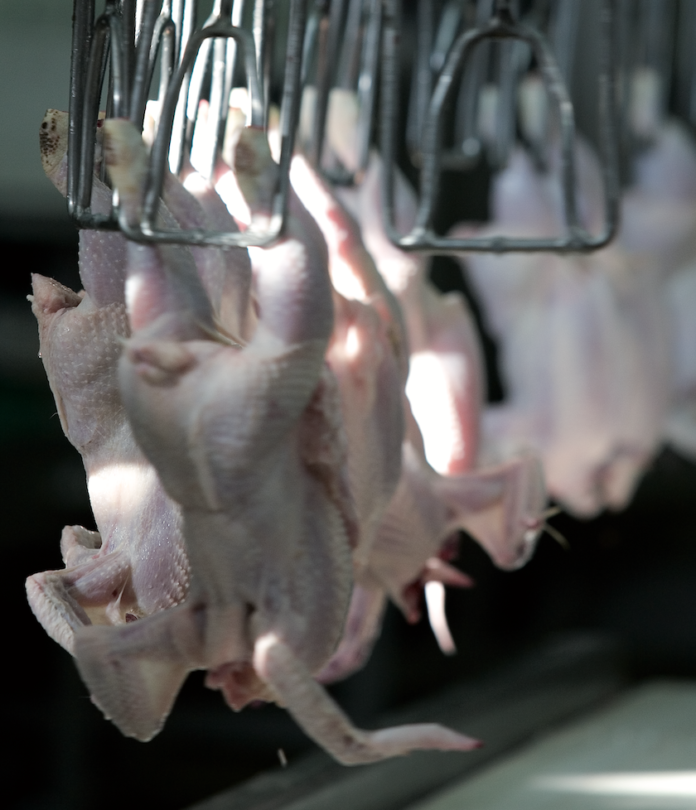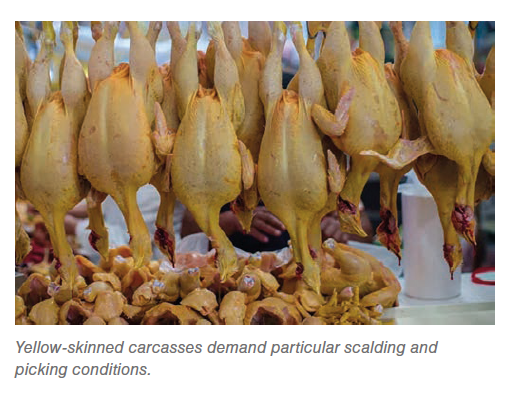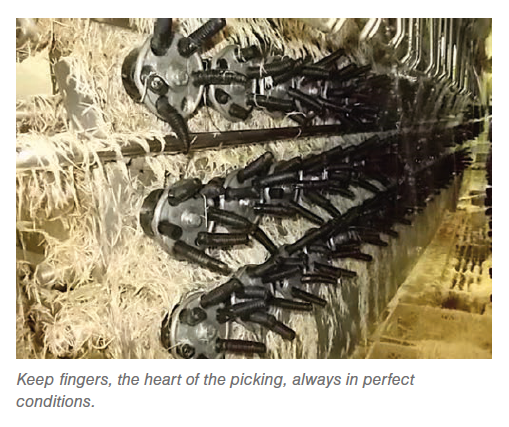
The poultry feathers are non-edible and need to be thoroughly removed during processing. The defeathering consists of moving the carcasses along the picking line where rotating rubber finger slash the skin and pull out the feathers from the follicles. Preserving the integrity of the carcasses as they undergo this innately aggressive process and guaranteeing an optimal defeathering at the same time, requires the plant harmonizes the continuous interaction among the scalder, the carcasses, and the pickers!
Ing. Fabio G. Nunes – Poultry Processing Consultant, Brazil
fabio.g.nunes@hotmail.com
“Without a standard there is no logical basis for making a decision or taking action.”
Joseph M. Juran (1904-2008)
The primary defeathering pre-requisite is the scalding, where birds flowing in must have both feet uniformly hung at the bottommost of the shackles. The scalding performance greatly determines the smoothness and efficaciousness of the feathers’ removal, and hence the overall quality of the carcasses out of the picking line.
The scalder width must match the broilers’ live weight to allow for an abundant and intense circulation of hot water around all over the carcasses, which is responsible for fully ruffling the feathers and optimizing the access of the hot water to the follicles. Additionally, the dwelling time and water temperature in the tank must be carefully set and managed in order to secure the follicles will absorb enough heat thus contributing to an effective and smooth defeathering. From the experience, a short time-high temperature setting is preferable over a long time-low temperature setting. However, each plant must set its optimal dwelling time x temperature binomial based on its own raw material, equipments and operation particularities.
Scalding for either white- or yellow-skinned carcasses is a matter of market preference. However, it is important to be aware that yellow-skinned carcasses require longer scalding time at lower temperature, and a longer and rougher, thus riskier, picking process when compared to white-skinned carcasses.
The farther apart the scalder exit and the pickers line are the higher the heat lost by the carcasses along the way, what might lessen the defeathering performance and threaten the carcass’ integrity. By experience, a 10-second-long gap between them may decrease the surface temperature of the carcasses by 4 degrees Celsius. Consequently, in the absence of floor area constraint, install the scalder and pickers close each other in-line, otherwise place them the nearest each other possible.
Once properly scalded the carcasses are ready to be defeathered. As defeathering is essentially a mechanical process, the regular maintenance of the machines is crucial to guarantee the pickers are always in great operational conditions and hence capable to perform an effective and smooth job. To achieve so, hold on to the maintenance program for the machines outlined by the manufacturer.
 The rubber fingers are the pickers’ heart and the ultimate responsible for an effective, smooth, and damage-free defeathering. Therefore, always source the best fingers available at the market. Yet often costlier compared to ordinary fingers, they result more economic given their longer life allied to a superior performance.
The rubber fingers are the pickers’ heart and the ultimate responsible for an effective, smooth, and damage-free defeathering. Therefore, always source the best fingers available at the market. Yet often costlier compared to ordinary fingers, they result more economic given their longer life allied to a superior performance.
Rubber fingers are manufactured in different hardness. Therefore, which one to use? In addition, is it best fitting pickers with single-hardness or multiple-hardness fingers? The best answers for both questions will come up from the analysis of a couple of variables, like pickers type and generation, scalding parameters, killing line speed, birds live weight, and desired skin color, among others.
Inspect the fingers every day and replace the missing, wore-down, and broken ones immediately. Fingers in poor condition lessen the defeathering performance and are a proven cause of damages to the carcasses, as well. So, do not save on them!
The carcass skin cools down along the picking line, what impairs the feathers’ extraction, thus leading to harder picking conditions that, by its turn, might translate into carcasses damages. To prevent the skin from cooling, thus contributing to defeathering smoothness, bath carcasses with lukewarm water (36.5-40.5 ºC) along the whole line.
Finally, never neglect the operator’s experience in any decision-making process regarding the operation. Remember that picking is not just science, but also art, instead!
Literature available from the author upon request

















